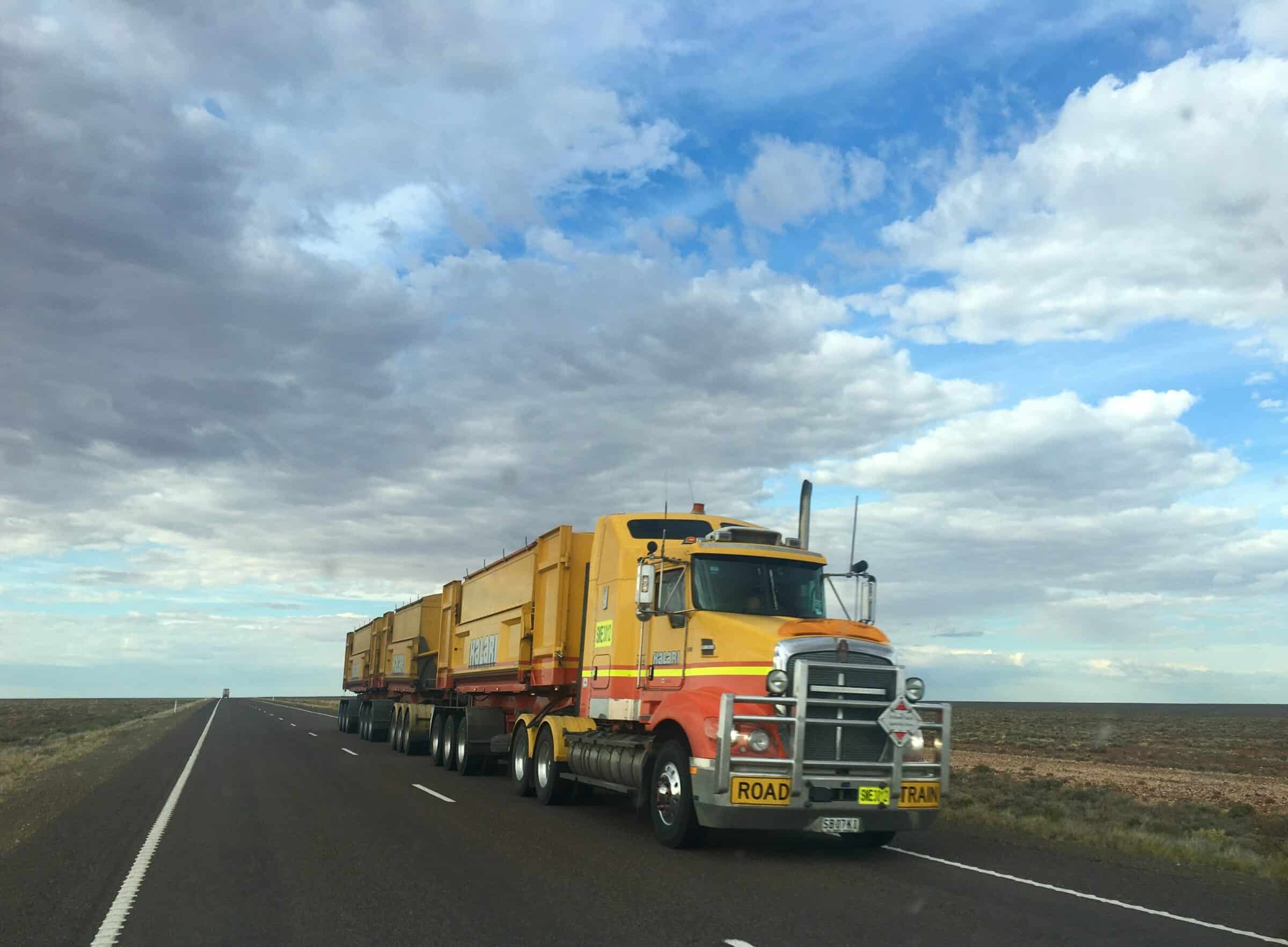As the Internet of Things (IoT) continues to be integrated more and more into the everyday objects and transport systems we use in our societies, it is having an important effect on how organisations and businesses operate – especially within the transportation industry.
IoT technology has opened numerous opportunities for fleet managers in the USA, from insurance, fleet management, EV charging infrastructure, and real-time tracking to predictive analytics.
Considering that the global fleet management market size was estimated to be worth around US$ 365 billion in 2022 with forecasts projecting further growth to US$ 960 billion by 2030, it’s relatively safe to say that the adoption of IoT has enabled the fleet management industry to expand at a rapid growth rate.
In this research article, we will explore the nuances of IoT in fleet management, the unique opportunities it offers in the USA, and some of the challenges that come with its adoption.
The role of IoT in fleet management in the USA
Going back to basics, fleet management is the process of managing a fleet of vehicles efficiently and effectively with the goal of reducing operational costs, providing scalability for complex operations and meeting customer service requirements.
Connected fleets are rapidly becoming the new wave of fleet management in the USA, and IoT technology is at its core. Research indicates that over 42% of American fleets use IoT technology to help optimise their fleet’s efficiency.
The established role of IoT in fleet management as well as the introduction of new IoT network technologies and types of devices has enabled fleet managers to enhance the management of drivers and vehicle assets all while improving their operational efficiency by providing a detailed picture and adaptive plan of their operations and state.
Fleet management is also becoming more complex. The advent of Electric Vehicles (EVs) means that systems need to be adapted to meet the changing usage characteristics and infrastructure needs of a changing, mixed, or wholly electric fleet.
Using the geo-resilient connectivity afforded by IoT SIM cards, telematics devices, in-vehicle routers, gateways, sensors, and connected cameras embedded in fleet vehicles, as well as the monitoring of associated infrastructure, fleet managers can utilise real-time tracking and monitoring to provide valuable data about vehicle performance, fuel consumption, driver behaviour, route optimisation, and the state of critical infrastructure.
This data-driven approach not only enhances operational efficiency but also contributes to predictive maintenance and improved safety measures.
For example, the ability to plan routes and charging needs is of particular importance for EVs. Given the vast geographical size of the USA, this is important to ensure that operational charge-points are in range and usable by vehicles that could easily become stranded.
Another rapidly growing area of fleet management operations is the use of incident cameras. They, together with accelerometers and sensors, enable incidents to be filmed as evidence to help safeguard drivers and detect weariness or distracted behaviours.
Improved digitisation for connected fleets in the USA
IoT fleet management is not just about eliminating disruptive incidents or improving operational efficiency, it’s also a strategic shift towards the digitisation and connection of complex operations. Integrating IoT with advanced analytical tools, fleet managers can now interpret the vast array of data into plannable and actionable insights.
This provides an unprecedented level of visibility for managers and executives into their fleet operations, helping them identify trends, foresee potential issues, plan for future growth, as well as spot value-adding service opportunities.
Furthermore, with IoT-enabled preventive maintenance rules and algorithms, potential faults can be diagnosed before they escalate into costly repairs or accidents, thereby reducing downtime and improving the overall lifespan of the fleet.
For example, tyre wear and pressure monitoring enables vehicles to report any areas that might be of concern.
With the increasing sophistication of smart tyre technology, this now can include the status of the tyre, in addition to the environmental conditions above and below the vehicle and the bumps created by potholes. This can create a sophisticated data view that creates a map of road states that can be shared commercially via mapping applications.
It’s clear to see that by leveraging IoT technology, fleet managers are better equipped to make informed decisions and forward plans. Ultimately leading to added value services, reduced costs and significantly boosted productivity and asset utilisation.
IoT is therefore paving the way for a more sustainable and cost-effective fleet management approach globally but given the unique characteristics in the USA is fundamental to keeping fleets moving efficiently, safeguarding drivers and assets, managing associated critical infrastructure, and adapting to changing needs caused by technological or societal advances.
How can effective fleet management drive efficiency?
A key benefit of utilising IoT technology within your connected fleet is its ability to connect not only vehicles but also systems and the available third-party data. This means that operations can be planned more effectively and streamlined where appropriate.
Indeed, available, and increasingly sophisticated platforms are increasingly providing dynamic route planning, to cater for vehicle characteristics – i.e., to save fuel or to optimise battery usage and recharge stop efficiency.
Of course, these systems also help eliminate costly manual processes and paperwork while enabling dispersed operator log-in portals.
The real-time data collected from sensors fitted in the vehicles can trigger immediate actions, such as route changes in response to traffic conditions, or instant alerts for mechanical issues. In turn, this leads to minimal downtime and efficient utilisation of resources.
Regardless of the specific context in which the technology is being used for fleet management, these data-driven insights open many possibilities for allowing for strategic planning and optimisation of routes and schedules, as well as the ability to react to critical incidents or incoming data.
They help reduce unnecessary mileage, fuel/battery consumption and the dynamic avoidance of avoidable delays.
Such smart management practices, facilitated by IoT, drive efficiency to new levels, fostering a system and culture that is highly responsive, adaptable and seeks a more efficient and smart fleet operation.
IoT utilisation in fleet management practices also enables the automation of several important associated processes. For example, many fleets are dealing in logistic operations. They may include service agreements or assets that are valuable or perishable.
Information on dispatching, scheduling, tracking, environmental status, and potential theft, therefore become critical to the quality of the goods, operation and even service level agreements.
For example, many logistic companies are required to hit certain waypoints in specified timescales, which were traditionally managed manually. Winning such contracts means that these systems are expected and must provide a degree of interoperability and transparency.
This level of automation and system integration means that human errors are reduced and considerably reduces the administrative load.
However, they need to also enable dynamic planning and reporting to be effective and help fleet managers achieve their service and operational goals.
With the use of IoT technologies, fleet managers have access to real-time data about vehicle statuses, longitudinal and micro driver behaviours, as well as environmental and road conditions. Using this information, fleet and logistic managers can swiftly analyse and act to prevent likely disruptions and maintain optimal performance.
In essence, IoT fleet management systems provide a comprehensive worldview as well as micro-level data for fleet operations and individual drivers and vehicles.
Enabling fleet managers to make data-driven decisions around logistics, goods, services, and assets that maximise safety, efficiency, and productivity.
Unique opportunities for USA IoT fleet management
As the IoT fleet management sector continues to grow, new and unique opportunities are available to businesses looking to secure added-value services, win new business, or optimise and streamline their operations.
For instance, connected fleets that are currently operational in the USA are increasingly able to leverage AI and machine learning technology to help analyse data, detect patterns, identify routines, triangulate data, and create warnings or predict maintenance needs.
This makes it possible for fleet operators to seamlessly manage their fleet. Predicting and responding to potential problems before they become problems or critical incidents, and drastically improving asset yield and management. This allows critical human resources to focus on key areas of business development and customer service provision.
In the next section, we will explore three key opportunities that are specifically available to connected fleets in the USA:
Opportunity 1: Enhanced public transport
In metropolitan and highly urbanised areas such as Chicago, the impact IoT technologies on fleet management and connected fleets have had on public transport infrastructure is profound.
Being home to the USA’s second-largest public transport system, the city is being used as a testbed for an innovative initiative that is optimising the city’s public services.
In a scheme run by the Chicago Transit Authority (CTA), buses running along the busy 79th Street bus corridor, a major hub within the system, have been upgraded with LIDAR sensors (a method for determining object ranges via laser reflection), onboard Wi-Fi beacons, fare systems and onboard video feeds to help monitor and manage transit occupancy, driver and passenger safety.
The wealth of data generated from these vehicles is being aggregated and analysed in near-real time by advanced AI technology, providing the CTA with invaluable insights about their fleet and its state of optimisation.
A machine learning algorithm is being used to optimise the further development and deployment of the city bus fleet. The aim is to enhance efficiency and services going forward.
The complex, integrated solution needs a flexible, open-architecture design to facilitate easy expansion into other vehicles that are currently used as part of the city fleet, promising further citywide improvements in the long term.
This optimisation of public services demonstrates how IoT technology used in fleet management can be used to revolutionise public transport, generating a solution for more efficient transport and service provision.
With time and expansion, and the addition of complementary and more unified services, the system should lead to a more integrated, safer, and usable transport system.
As an example, IoT sensors, devices and onboard video can track passenger safety via onboarding, passenger counting, ticketing, and seat occupancy to flag up excessive overloading of the vehicle.
Opportunity 2: Seamless tracking of cargo fleets
Whether a fleet or operational manager is aiming to monitor the behaviour drivers as they travel interstate, or between major urban areas such as Dallas to Phoenix, or track key assets such as shipping containers leaving the Port of Los Angeles, IoT technology can provide the key to unlocking the wealth of data created during their everyday operations, and a new level of visibility.
For example, by affixing simple GPS trackers, or more sophisticated multifunction devices onto fleet vehicles or containers, managers can gain real-time insights into the location, condition, and unauthorised opening of their cargo. Of course, video evidence that is time and location-stamped can also be gathered.
While tracking fleets using IoT telematic solutions that provide location, speed, and a range of configurable vehicle metrics and warnings, fleet managers can see a range of benefits, including:
- Driver behaviour and safety
- Collision detection
- Erratic driving
- Fuel management, payment, and delivery
- EV charge management and planning
- Route and waypoint planning, leading to more reliable services and SLA.
- Theft of vehicle
- Internal and external vehicle monitoring for theft prevention and cargo hold security.
- Environmental impact analysis and waste reduction
- Cost control
- Service efficiency
- Work zone analytics
- Road asset management
- Asset and cargo management and optimisation
- More sophisticated risk management
Opportunity 3: Predictive maintenance
Using telematics, specialist integrated sensors, and devices, fleet managers can proactively address potential mechanical or electrical issues before they evolve into significant problems through predictive maintenance analysis.
IoT sensors embedded in fleet vehicles constantly monitor various parameters such as mileage, acceleration, engine performance, temperature, system warnings, service status, tyre pressure and state, brake systems, and battery health. This real-time data is then processed and analysed to predict potential faults.
By identifying and rectifying these issues early, fleets can schedule safety and vehicle health checks, avoiding unexpected breakdowns and costly repairs, and maintaining optimal vehicle performance for their fleet.
Furthermore, this predictive approach also minimises unexpected downtime, enhancing the overall efficiency and lifespan of the fleet.
Challenges for Connected Fleets in the USA
Like any IoT solution, connected fleet management is not without its challenges. Fortunately, each challenge can be addressed with the right approach and use of technology.
Safety
Despite the numerous advantages of IoT in fleet management, the aspect of safety remains a primary concern for connected fleets.
There are some obvious concerns about the safety of autonomous vehicles and the protocols for employees around the theft of vehicles or cargo. It is imperative that these sorts of issues are considered in advance of an IoT deployment.
For instance, it is key that the warnings do not in turn create an even greater threat for the driver who might feel compelled to respond or intervene.
The surge in the number of interconnected devices raises the threat of potential cybersecurity infiltrations, which could make the fleet vulnerable to data breaches and unauthorised access. Unauthorised individuals or groups could gain access to vehicle systems, posing significant safety risks if they are able to reconfigure parameters.
To address these security concerns, implementing robust connectivity security measures, encryption methods and firewalls is critical.
Additionally, regular audits need to identify potential security vulnerabilities or weaknesses. Periodic and regular software updates are fundamental to staying ahead of new or emerging threats and can help fortify the device’s defences.
Connectivity
Connectivity is a fundamental challenge, as fleet management depends heavily on stable and continuous access to the internet.
Fleets that traverse vast and remote areas may encounter regions with poor or non-existent network coverage when using a single network, resulting in data transmission interruptions, and potentially jeopardising the real-time tracking and monitoring of fleet operations.
For these sorts of services, access to all three major MNO networks is critical to providing the widest and most reliable coverage.
Given that 2G and 3G technologies are no longer available, 4G LTE technologies are the main load bearer for this connectivity. As 5G is deployed more in urban areas, more possibilities become possible, particularly for sophisticated public transport systems.
Indeed, as logistics increasingly traverse the continent and cross borders, cost-effective roaming and IMSI plans that cover Mexico and Canada are fundamental to operational success. Mexico is an increasingly important manufacturing centre for the region.
Valuable goods are therefore in transit on a frequent basis, travelling large distances to the USA and Canada.
Network Data Security
Broader network data security poses another significant challenge for fleet networks.
With the transmission and storage of vast amounts of sensitive information, including driver behaviour, vehicle location, and cargo details, there is an increased risk of data breaches and potential misuse or theft.
Unauthorised access to this data would lead to serious consequences, including potential service loss, financial loss and reputational damage. Where companies are providing a service, data breaches would have a significant impact on those contracts.
To mitigate this risk, it is crucial to implement stringent data security measures right across the network. Encryption of data at source, rest, in transit and storage, significantly reduces the risk of a breach.
Moreover, adopting a comprehensive data governance policy, which includes regular security audits, standards implementation and assessment, controlled data access, extra layers of user authentication, user management, and robust data backup and recovery mechanisms, can help guarantee the confidentiality, integrity, and availability of the data.
In turn, this process ensures the efficiency and trustworthiness of IoT fleet management.
Tailored connected fleet solutions.
In conclusion, IoT plays a pivotal role in transforming fleet management across the USA and the North American region. It offers constantly emerging technologies and comprehensive solutions for optimised route planning, seamless cargo tracking, predictive maintenance, and enhancing safety, vehicle, and driver protection measures.
It comes as no surprise that nearly half of business users are now using IoT technology to help optimise their fleets. It can, however, be challenging to find an IoT fleet solution that meets the unique needs of each business.
At Caburn Telecom, we provide a sophisticated and customised approach to ensuring fleets remain connected wherever they are located and help ensure the appropriate security and safety mechanisms are in place.
We, therefore, offer tailored connectivity solutions which incorporate the latest in IoT connectivity technology and the associated advanced analytics.
We consider both current and future needs as vital in ensuring your fleet is equipped to handle the challenge that will come its way.
By effectively integrating geo-resilient IoT connectivity solutions with robust security measures, Caburn Telecom empowers fleets to expand towards a value-focused, efficient, secure, and sustainable future.
Please get in touch with our expert team today to learn more.




